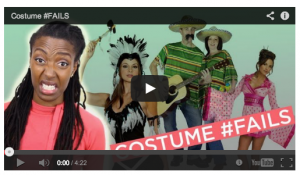May Day Part III: #Social and #Political #Movements, There’s Research on That! #TROT http://t.co/R8WXHOR2jK by @Ekojo pic.twitter.com/C80iAXzYks
— The Society Pages (@TheSocietyPages) May 1, 2015
“There’s Research On That!” (#TROT) is a blogging project at The Society Pages that presents short summaries of classic and contemporary research relevant to current events as a resource for journalists and the public. While our archives are a great resource for students looking to kick-start a sociological research paper or for readers who want a fresh take on the news for their next cocktail party, the format of these posts also works great for class assignments! For this activity, students write their own TROT posts as an exercise in collecting, evaluating, and summarizing research.
Guidelines:
- Browse the “There’s Research On That!” blog to get a sense of how TROT posts are written. They usually start with a summary of a current event, then provide sociological ideas relevant to the matter at the hand. The author highlights one to four key ideas from the research and includes citations for each source with hyperlinks to the authors’ website and the publication information.
- Choose a recent news event or pop culture trend to analyze. Ask yourself, “What would sociologists have to say about this that the rest of the media may be missing?” Make a list of a few possible themes to investigate about the topic, such as the impact of social construction, institutions, or networks.
- Search for literature on your themes using an online database such as JSTOR, Sociological Abstracts, or Google Scholar. Select three to five pieces that speak to the themes or provide broader information about the topic.
***Start with major journals in the field—American Sociological Review, American Journal of Sociology, or Social Problems—but the search doesn’t end there! Books and publications focusing more narrowly on subfields, such as Journal for the Scientific Study of Religion, Gender & Society, or Deviant Behavior are always helpful. Also, remember to think broadly; sometimes a general article about the topic can be more helpful than one that fits the news story perfectly.
- Evaluate the research. Read the methodology sections of any journal articles, or find reviews of the books published in academic journals. Do you find the conclusion(s) convincing, based on the evidence provided? Is the methodology high quality? Which pieces provide the best takeaways for a general reader? Once you’ve considered the possible sources separately, consider how they will fit together in your post. From your list, pick the best two or three pieces to include in your article.
- Write a TROT post in the style of the website. Remember the main components: a short summary of the news, including links to media coverage so the reader can see what’s already been written; key takeaways you identified in the sociological literature; and citations of the research. Be prepared to discuss in class why you picked the sources you did.
TROT is an evolving project quickly becoming an integral part of TSP. Instructors are encouraged to contact the TSP staff (email tsp@thesocietypages.org) with the best TROT posts from this assignment for possible publication on TSP!









